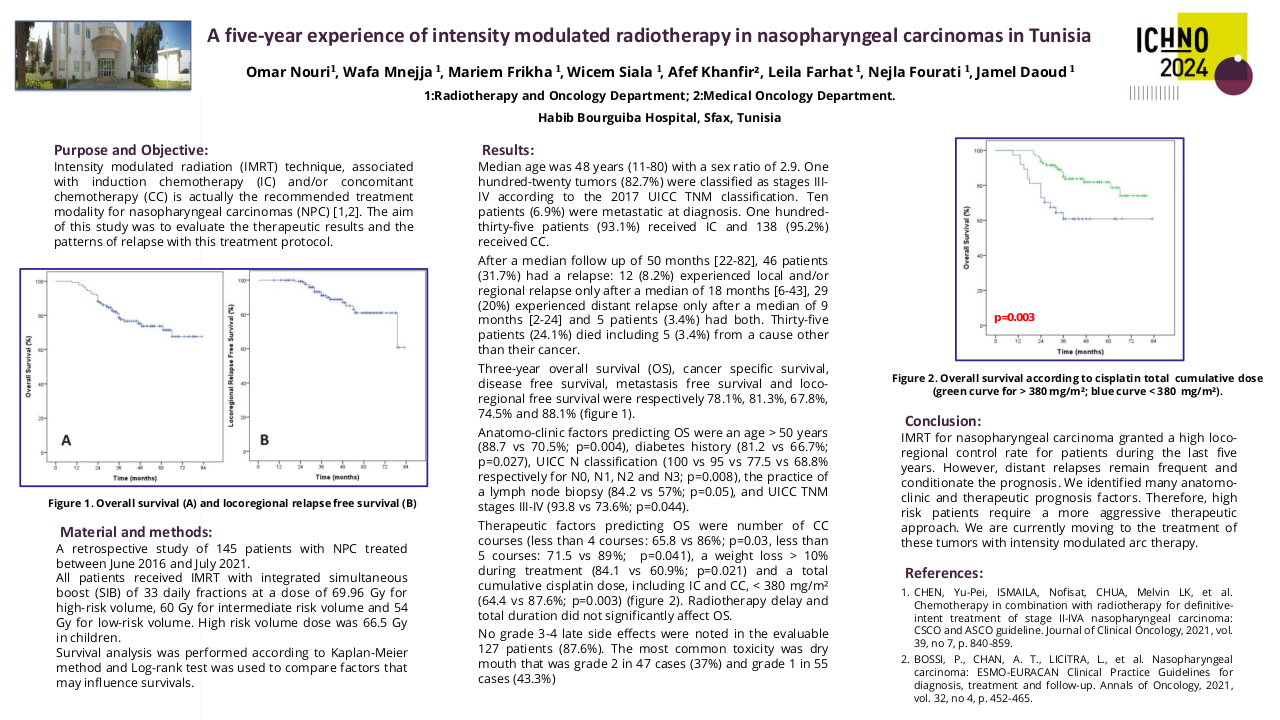Review of oropharyngeal cancer recurrences- how do they present?
Purpose/Objective
Oropharyngeal squamous cell cancers have a locoregional recurrence rate range of 17.3-32.5% and a distant metastatic rate of 6.5-17% at 3 years (ref1). Structured follow up is of paramount importance to facilitate early diagnosis and salvage treatment. We examined a cohort of patients with oropharyngeal cancer treated radically within a large Irish tertiary referral centre with diagnosed recurrence in order to better understand the clinical presentation and to optimise outpatient follow up following radical treatment.
Material/Methods
An existing database of 259 new oropharynx cancer patients treated radically between 2012 and 2020 was assessed to identify any patient with established recurrence. For those with recurrence: details of clinical presentation and diagnosis were recorded.
Results
Of the 259 patients assessed 70 experienced recurrence: 12 with locoregional failure, 12 with both local and distant failure, 25 with distant only failure and 21 with persistent disease post treatment.
Of the 12 locoregional failures- 92% were symptomatic: pain (83%) and neck lump (8%). One recurrence was identified during routine outpatient review, the remainder following patient contact after onset of symptoms. 75% of the patients with locoregional failure had non-HPV related cancers, and 85% of the group were stage 3 or stage 4 at initial presentation. In terms of timeline to presentation, 50% had been identified within 9 months and 80% within 2 years following treatment.
Of the 12 local + distant failures- 75% were symptomatic: pain (67%) and neck lump (8%). 2 patient recurrences were identified during routine outpatient review, the remainder following patient contact. 50% of the patients in this group had HPV related tumours and 50% of this group were stage 3 or stage 4 at initial presentation. 80% of these recurrences had been identified within 2 years following treatment.
Of the 25 distant failures: 61% were identified on post treatment imaging, 15% presented with respiratory symptoms, 12% presented with pain or palpable lump and 12% were identified on routine imaging. 70% of the patients in this group had HPV related tumours and 57% of this group were stage 3 or 4 at presentation. 80% of these recurrences has been identified within 2 years following treatment.
21 patients were found to have persistent disease following treatment- all were identified on post treatment imaging.
Conclusion
Locoregional recurrence of oropharynx cancer is associated with patient symptoms in over 90% of cases, most commonly pain. These symptoms are rarely discovered during routine review. Of the 12 patients found to have locoregional recurrence, 75% of the group were non HPV related tumours, 85% were stage 3 or 4 at initial presentation and 80% of the recurrences were identified within 2 years of treatment.
This study highlights the importance of both patient and staff education and the importance of outpatient communication pathways that facilitate prompt review and investigation of new symptoms.
T. Guo et al: Current perspectives on recurrent HPV-mediated oropharyngeal cancer: Front. Oncology, 18 August 2022. Head and Neck Cancer. Vol 12-2022






